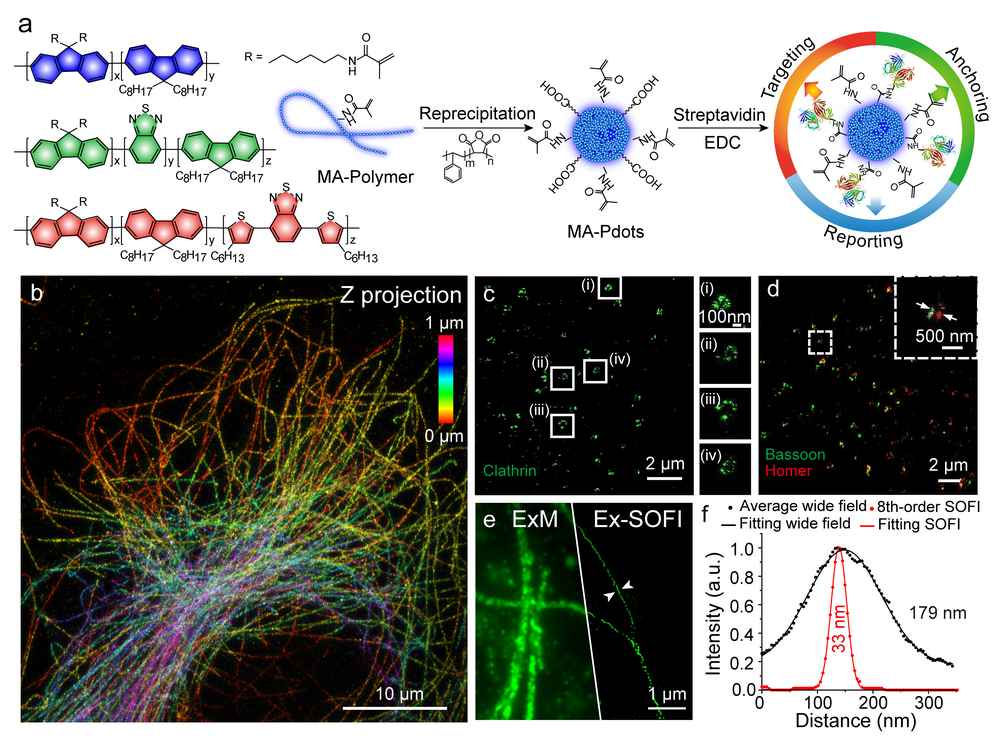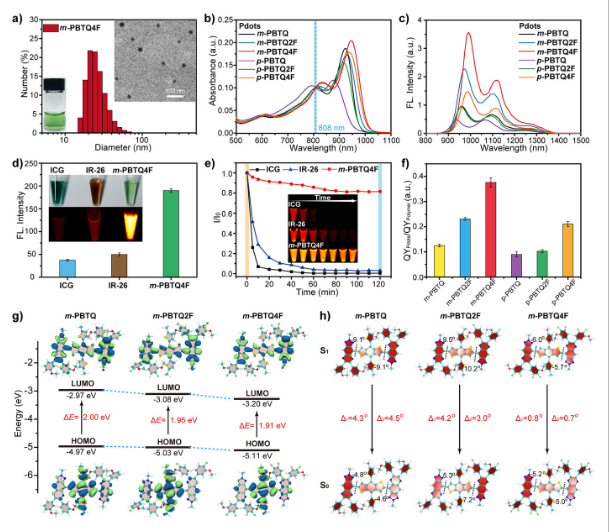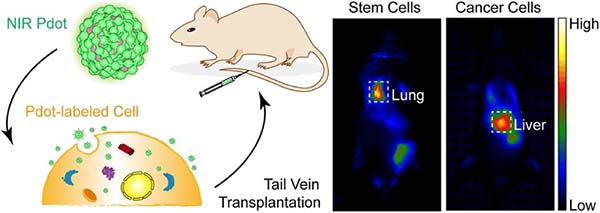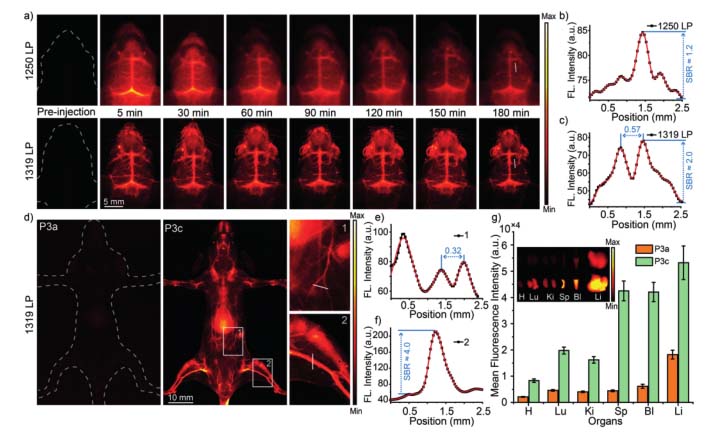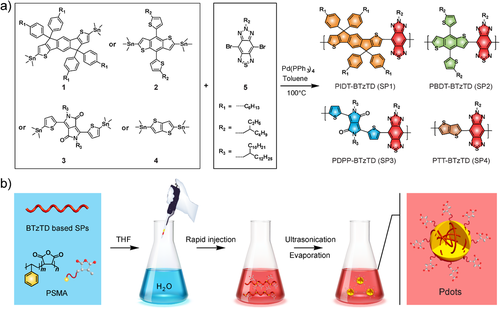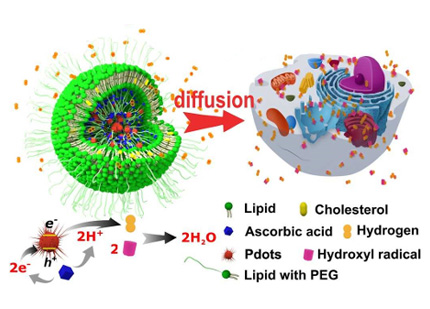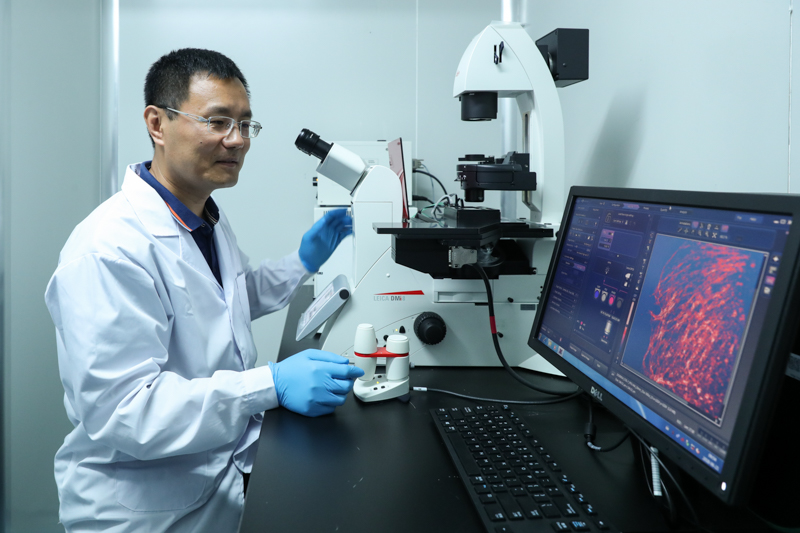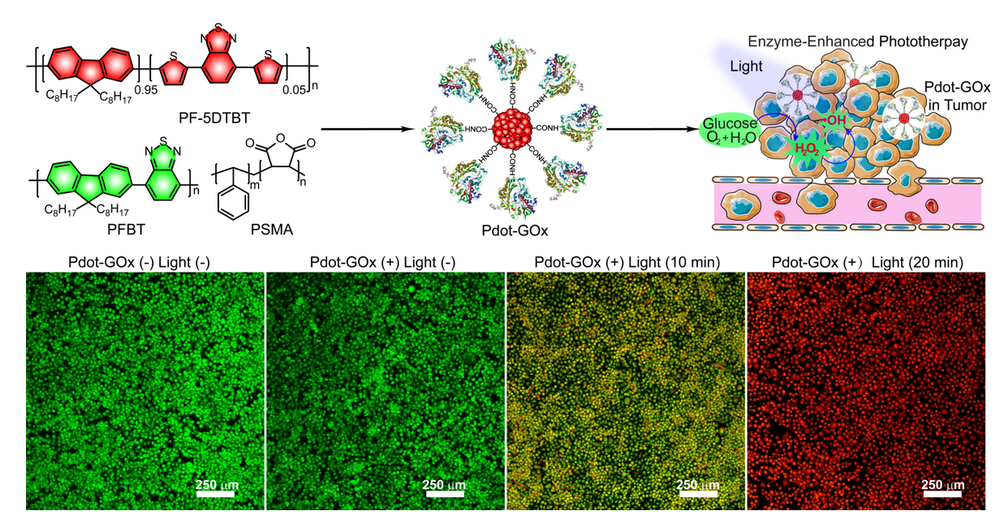Liu, J.; Fang, X.; Liu, Z.; Li, R.; Yang, Y.; Sun, Y.; Zhao, Z.; Wu, C.*, Expansion Microscopy with Multifunctional Polymer Dots. Advanced Materials, 2021,33(25), 2007854.
Expansion microscopy (ExM) provides nanoscale resolution on conventional microscopes via physically enlarging specimens with swellable polyelectrolyte gels. However, challenges involving fluorophore degradation and dilution during sample expansion have yet to be overcome. Herein, sequential cellular targeting, gel anchoring, and high-fidelity
NIR-II Fluorescence Imaging Reveals Bone Marrow Retention of Small Polymer Nanoparticles (Nano Letters , 2021, 21(1) :798–805)
The concept that systemically administered nanoparticles are highly accumulated into the liver, spleen and kidney is a central paradigm in the field of nanomedicine. Here, we report that bone is an important organ for retention of small polymer nanoparticles using
Fluorination Enhances NIR‐II Fluorescence of Polymer Dots for Quantitative Brain Tumor Imaging (Angew. Chem. Int. Ed., 2020, 59(47): 21049-21057)
Here, we describe a fluorination strategy for semiconducting polymers for the development of highly bright second near‐infrared region (NIR‐II) probes. Tetrafluorination yielded a fluorescence QY of 3.2 % for the polymer dots (Pdots), over a 3‐fold enhancement compared to non‐fluorinated counterparts.
In vivo dynamic cell tracking with long-wavelength excitable and near-infrared fluorescent polymer dots (Biomaterials, 2020, 254, 120139.)
Development of cell-based therapeutic systems has attracted great interest in biomedicine. In vivo cell tracking by fluorescence provides indispensable information for further advancing cell therapy in clinical applications. However, it is still challenging in many cases because of the limited
Semiconducting Polymer Dots with Dual‐Enhanced NIR‐IIa Fluorescence for Through‐Skull Mouse‐Brain Imaging (Angew. Chem. Int. Ed.,2020,59(9):3691-3698)
Fluorescence probes in the NIR-IIa region show drastically improved imaging owing to the reduced photon scattering and autofluorescence in biological tissues. Now, NIR-IIa polymer dots (Pdots) are developed with a dual fluorescence enhancement mechanism. First, the aggregation induced emission of
Polymer-Dot Modulator for Ultrafast Pulsed Lasers (Laser Photonics Rev. 2019, 13, 1800326)
Optical modulators hold great promise for nonlinear optical and photonic devices. However, current optical modulators are exclusively based on inorganic saturable absorbers such as semiconductor thin films, 2D materials, and plasmonic nanocrystals. Here, nonlinear optical modulation is demonstrated by designing
Polymer Dots for Hydrogen Therapy (Angew. Chem. Int. Ed. 2019, 58, 2744)
Semiconducting polymer dots (Pdots) have recently attracted considerable attention because of their photocatalytic activity as well as tunable optical band gap. In this contribution, we describe the therapeutic application of Pdots through in situ photocatalytic hydrogen generation. Liposomes were employed
Polymer-Dot Transducer for Wireless Glucose Monitoring (ACS Nano 2018, 12, 5176)
Recently, Biomedical Engineering Professor Wu Changfeng's research group has made new progress on biomedical sensors by developing an ultrasensitive Pdot transducer for real-time, wireless in vivo glucose monitoring via a smartphone. The results were published in the American Chemical Society's
Enhanced Phototherapy by Nanoparticle-Enzyme (Nano Lett. 2017, 17, 4323)
Recently, Professor Wu Changfeng's research group from SUSTech's department of biomedical engineering, made significant advances in the research of optical polymer and fluorescent imaging of semiconductor polymer nanomaterials. Two research papers have been published in the famous scientific journals Nano Letters and Chemical


